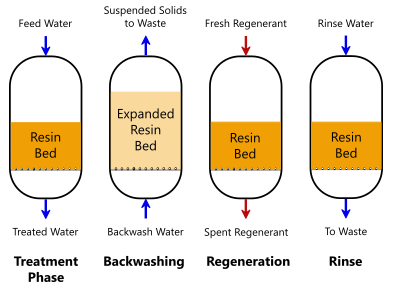Your Guide to PFAS Treatment Technologies and Perks
The frequency of PFAS contamination in water sources requires a thorough understanding of offered therapy modern technologies. Each innovation not only targets specific PFAS compounds however additionally plays a crucial function in boosting total water quality and safeguarding environmental stability.
Comprehending PFAS Contamination
Understanding PFAS contamination is important for resolving its prevalent influence on ecological and human wellness (m270 pfas treatment). Per- and polyfluoroalkyl substances (PFAS) are a group of synthetic chemicals commonly utilized in numerous commercial and customer items due to their water- and grease-resistant residential properties. Commonly discovered in firefighting foams, non-stick pots and pans, and water-repellent materials, PFAS have entered the setting via production processes, wastewater discharges, and leaching from landfills
Once launched, these materials continue the setting, causing extensive contamination of soil and water sources. Their unique chemical framework, identified by solid carbon-fluorine bonds, makes them resistant to destruction, causing a phenomenon called "for life chemicals." Subsequently, PFAS can collect in the human body and the food chain, possibly causing negative health and wellness effects, consisting of body immune system disruption, developing problems, and a boosted risk of particular cancers cells.
Regulatory companies and wellness companies are significantly acknowledging the value of PFAS contamination, triggering efforts to keep track of, analyze, and reduce its results. Understanding the paths of PFAS contamination is vital for informing public law and developing efficient strategies to secure both environmental and human health and wellness.
Review of Therapy Technologies
Various therapy technologies have been created to address the difficulties posed by PFAS contamination in water and dirt. These technologies can be extensively identified right into several classifications, each with its one-of-a-kind mechanisms and performance in removing PFAS compounds.
One prominent method is ion exchange, which uses resin products to catch and get rid of PFAS from polluted water. An additional modern technology, progressed oxidation processes (AOPs), uses strong oxidants and ultraviolet light to break down PFAS into less harmful compounds.

Turned On Carbon Filtration
Activated carbon filtration is a widely utilized method for the removal of PFAS from contaminated water, understood for its capability to adsorb a wide variety of natural compounds. This innovation utilizes activated carbon, an extremely porous material with a substantial surface location, which assists in the binding of PFAS molecules with physical adsorption. The effectiveness of triggered carbon in eliminating PFAS is influenced by several factors, consisting of the kind of carbon used, the call time, and the focus of PFAS in the water.
One of the advantages of activated carbon purification is its convenience; it can be applied in various arrangements, such as granular triggered carbon (GAC) systems or powdered triggered carbon (PAC) systems. GAC systems are usually employed in larger-scale applications, while special-interest group can be utilized in smaller or anchor short-lived arrangements. The modern technology is fairly easy to operate and preserve, making it available for many water therapy centers.

Ion Exchange Equipment
Ion exchange systems represent another efficient approach for the removal of PFAS from contaminated water, enhancing methods like turned on carbon filtration. These systems operate the principle of trading ions in the water with ions held on a resin material. Ion exchange resins can be especially created to target the adversely billed PFAS substances, properly capturing them and permitting cleaner water to pass through.
Among the primary benefits of ion exchange systems is their ability to eliminate a vast array of PFAS, consisting of both long-chain and short-chain variants. This convenience makes them suitable for different applications, varying from municipal water therapy to commercial processes. Furthermore, ion exchange systems can frequently attain reduced detection limits for PFAS contrasted to some other treatment approaches, hence improving water high quality.
Nonetheless, it is crucial to monitor and handle the regrowth of ion exchange media, as the performance can decline gradually as a result of saturation. Correct maintenance and replacement of the resin are vital for maintaining the system's effectiveness. In general, ion exchange systems supply a reliable and effective option for PFAS elimination, adding dramatically to secure alcohol consumption water standards and environmental management.
Advanced Oxidation Processes
Advanced Oxidation Processes (AOPs) make use of effective oxidants to effectively degrade PFAS compounds in contaminated water. These innovative treatment techniques produce extremely reactive species, such as hydroxyl radicals, that can break down complex PFAS particles right into less dangerous byproducts. m270 pfas treatment. AOPs generally employ combinations of ultraviolet (UV) light, ozone, hydrogen peroxide, or Fenton's reagent, improving the oxidation capacity and improving degradation efficiency
The key benefit of AOPs depends on their ability to target a wide series of PFAS substances, including both long-chain and short-chain variants. This flexibility is vital, as PFAS contamination typically involves combinations of various compounds with varying chemical frameworks. AOPs can be incorporated into existing water therapy systems, making them a useful solution for lots of districts and markets.
However, the execution of AOPs can click here for more info be resource-intensive, needing mindful factor to consider of operational costs and power consumption. In addition, while AOPs work in damaging down PFAS, they might not completely remove all byproducts, demanding additional therapy steps - m270 pfas treatment. On the whole, AOPs stand for an appealing avenue for resolving PFAS contamination, contributing to cleaner water sources and improved public wellness security

Conclusion
To conclude, resolving PFAS contamination calls for a detailed understanding of offered treatment modern technologies. Triggered carbon purification, ion exchange systems, and progressed oxidation processes each existing one-of-a-kind advantages for successfully eliminating these damaging compounds from water resources. By selecting the ideal modern technology, neighborhoods can improve water quality, shield public health and wellness, and mitigate the ecological risks linked with PFAS exposure. Proceeded study and application of these methods are crucial for efficient management of PFAS contamination in impacted areas.